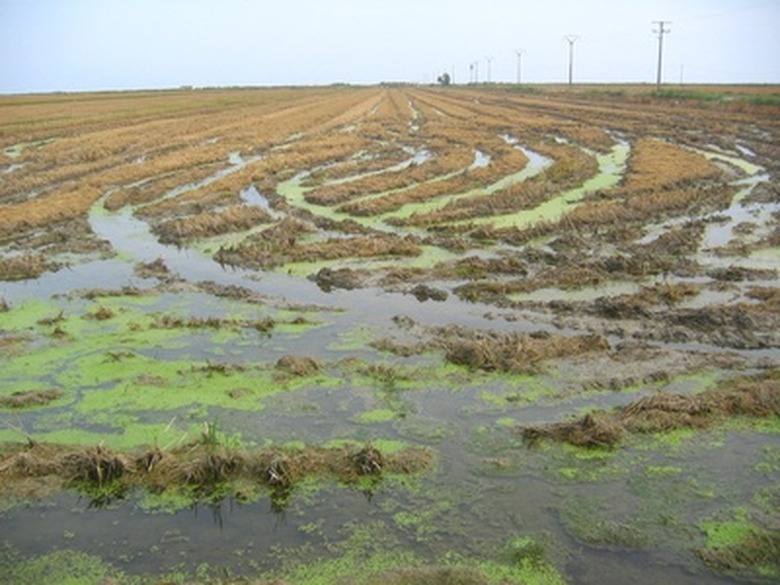Factors That Affect The Formation Of A Delta
Most rivers eventually empty into an ocean. At the point of intersection between river and ocean, a triangular-shaped land mass is formed, called a delta. The tip of the triangle is at the river, and the base is at the ocean. The delta has many creeks flowing through it, creating many small islands. Much study has gone into river-delta formation, and geologists and other researchers continue to study the natural forces behind delta formation.
Non-Static Landform
Non-Static Landform
Research published in "Modeling River Delta Formation" by Hansjorg Seybold, et al., at the Swiss Federal Technical Institute in 2007 brought forth that deltas are not static land masses. A delta constantly changes shape, depending on a variety of factors. The researchers developed scale models of deltas and observed first hand that sediment flow, erosion changes and water actions affect a delta's shape significantly over time.
Three Forces Involved
Three Forces Involved
The "Modeling River Delta Formation" paper describes three forces in delta formation: river dominated, wave dominated, and tide dominated. The river-dominated force is how the river interacts with the ocean. The wave-dominated force is how ocean and river waves move the silt and sediment around to form deltas. The tide-dominated force is how the tides affect delta formation. It is a combination of these three forces that shape the final delta. For example, the Mississippi River delta was formed by river domination as the main force. The Fly River Delta in Papua New Guinea, however, was formed by tide-dominated forces.
Land Solids Formation
Land Solids Formation
Another factor that forms a delta is the amount and type of solids and sediment in the river. Researcher Anton Jay DuMars investigated the Mississippi Delta in his Master's Thesis at Louisiana State University in 2002. He found that sediment flow is 20 times greater during flood times than non-flood times. Sediment flow is ever changing, and as the sediment piles up, islands and sand bars form. These sediment islands can get washed away over time, so the topography of a delta constantly changes with floods and low-river times.
Draw a Delta
Draw a Delta
You can draw a delta, and investigate how it changes. First, draw the capital letter "Y." At the top of the "Y," draw two capital letter "Vs," with the tip of the "Vs" touching the top legs of the "Y". Draw two more "Vs" on top of the legs of the first "V." Keep drawing "Vs," and you discover a capillary-like formation. Suppose sediment starts to accumulate at any of the splits. The splits are called bifurcations. The sediment finally starts to form an island at the bifurcation. Water spills over the island, and forms two more "Vs" at the point. This is how a delta is formed, and how it constantly changes over time.
Cite This Article
MLA
Oldhand, Tony. "Factors That Affect The Formation Of A Delta" sciencing.com, https://www.sciencing.com/factors-affect-formation-delta-7823700/. 24 April 2017.
APA
Oldhand, Tony. (2017, April 24). Factors That Affect The Formation Of A Delta. sciencing.com. Retrieved from https://www.sciencing.com/factors-affect-formation-delta-7823700/
Chicago
Oldhand, Tony. Factors That Affect The Formation Of A Delta last modified March 24, 2022. https://www.sciencing.com/factors-affect-formation-delta-7823700/
